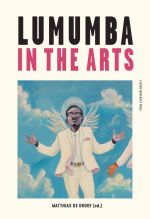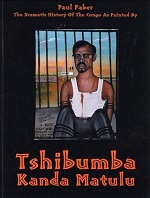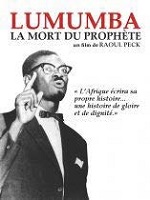Lumumba in the arts
On 30 June 1960, Patrice Lumumba gave his legendary independence speech at the  Ceremony of the Proclamation of Congo's Independence. From that moment, and even more so after Lumumba’s controversial assassination in 1961 – the involvement of the Belgians, and the role played by American, British, and French intelligence services has by now become increasingly clear – Lumumba has become one of the most iconic leaders of the African independence struggle. This month’s Library Highlight, features Lumumba in the arts, edited by Matthias de Groof.
Ceremony of the Proclamation of Congo's Independence. From that moment, and even more so after Lumumba’s controversial assassination in 1961 – the involvement of the Belgians, and the role played by American, British, and French intelligence services has by now become increasingly clear – Lumumba has become one of the most iconic leaders of the African independence struggle. This month’s Library Highlight, features Lumumba in the arts, edited by Matthias de Groof.
Lumumba in the arts
This richly illustrated 463 paged edited volume looks at the representation of Patrice Lumumba in various art forms. Examples range from historical sources such as pro- and  anti- Lumumba cartoons, newspaper articles, and photographs, to more recent examples in cinema, theatre, comics, poetry, music, painting and public art. Chapters are by highly acclaimed scholars from various disciplines. Also included are a number of testimonials of artists, who have depicted Lumumba in their works. All chapters contain multiple images, and the book also features a 35-page gallery section.
anti- Lumumba cartoons, newspaper articles, and photographs, to more recent examples in cinema, theatre, comics, poetry, music, painting and public art. Chapters are by highly acclaimed scholars from various disciplines. Also included are a number of testimonials of artists, who have depicted Lumumba in their works. All chapters contain multiple images, and the book also features a 35-page gallery section.
Many paintings depicted in the book were created by Congolese painter Tshibumba Kanda Matulu (1947-1981). Also included is a chapter with passages from conversations of this artist with anthropologist Johannes Fabian. The dramatic history of the Congo as painted by Tshibumba Kanda Matulu is the catalogue of an exhibition held in the  Tropenmuseum in Amsterdam, which featured Tshibumba’s most famous work The history of Zaïre (1973-1974). In this work, a series of 102 paintings, Tshibumba combined traditional African storytelling with urban popular art.
Tropenmuseum in Amsterdam, which featured Tshibumba’s most famous work The history of Zaïre (1973-1974). In this work, a series of 102 paintings, Tshibumba combined traditional African storytelling with urban popular art.
The chapters on cinema include a testimonial by, interview with, and analysis of Haitian Raoul Peck’s 1992 documentary Lumumba : la mort du prophète, which is part of the ASCL Library film collection, and his fiction film Lumumba (2000). In his documentary, Peck shows the decolonization of the Congo, and the rise and fall of Patrice Lumumba, through historical sounds and images, interviews, and even home movies and personal memories. Peck spent part of his childhood and early adult life in the Congo, were his father worked for the UN.
More ASCL Library sources on and by Patrice Lumumba
The ASCL Library collection holds an extensive amount of titles on the history of independence of the Democratic Republic of the Congo, and by or on Patrice Lumumba. A selection of these titles can be found in the ASCL web dossier African leaders of independence.
Works on the representation of Lumumba are, for example, Patrice Lumumba: La construction d'un héros national et panafricain by Pierre Petit, and Patrice Lumumba entre dieu et diable: Un héros africain dans ses images by Pierre Halen and János Riesz. There are also interesting historical sources available in the ASCL Library collection. Le Congo, terre d'avenir, est-il menacé?, was written by Lumumba in 1957, and published in 1961. Patrice Lumumba: receuil de textes, and Dits et Ecrits, are both smaller compilations of Lumumba’s speeches and writings. La pensée politique de Patrice Lumumba brings together all of his most important texts, and contains an introduction on Lumumba’s political thinking by Jean-Paul Sartre.
Web resources on Patrice Lumumba
- Lumumba’s independence speech
- Podcast : Spéciale Archives d'Afrique - Patrice Emery Lumumba (1-4) - RFI (2010)
Prt 1 | Prt 2 | Prt 3 | Prt 4 - Documentary: Independence Cha Cha - The story of Patrice Lumumba - KM Media (2014)
- Introduction to La pensée politique de Patrice Lumumba by Jean-Paul Sartre
Germa Seuren

